

The Inuit Pantheon of Gods and Spirits. Please mention Godchecker.com when praying to the Gods.
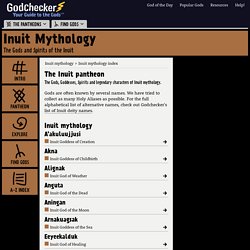
Copyright © 1999-2020 Godchecker, Inc. All rights reserved. (Copyright notice.) Please do not copy without permission. If you wish to use our material in your essay, book, article, website or project, please consult our permissions page. Inuit health: Selected findings from the 2012 Aboriginal Peoples Survey. View the most recent version.

Archived Content Information identified as archived is provided for reference, research or recordkeeping purposes. Do Inuit have a political system? (and what type?) - Seb's Project on Inuits. I was particularly interested in this one.

Since the word 'Inuit' covers a vast amount of peoples based in many differing countries, would it become difficult to have a dominating government????? Valerie says: Present day Inuit have democratic political systems reflecting the country they live in. Historically, Inuit communities were so small that there was very little in the way of formal government structures.
There were common cultural behaviours and expectations, but generally, because the communities were rarely larger than an extended family or two, then the oldest, most respected, best hunter tended to be the closest approximation to a leader. Inuit Language - Structure, Writing & Alphabet - MustGo. Tunngasugit – Welcome The term Inuit (plural of Inuk ‘man’) refers to a group of indigenous peoples of the circumpolar regions of Alaska, Canada, and Greenland.
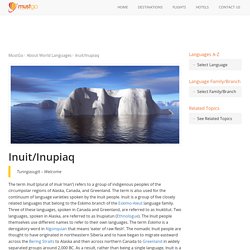
The term is also used for the continuum of language varieties spoken by the Inuit people. Religion. What year did the Inuit tribe live in? – Sidmartinbio.org. What year did the Inuit tribe live in?
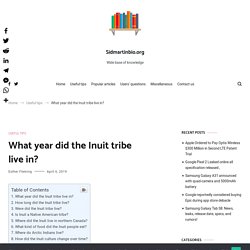
History. During roughly 4,000 years of human history in the Arctic, the appearance of new people has brought continual cultural change. The ancestors of the present-day Inuit, who are culturally related to Inupiat (northern Alaska), Katladlit (Greenland) and Yuit (Siberia and western Alaska), arrived about 1050 CE. How long did the Inuit tribe live? For 5,000 years, the people and culture known throughout the world as Inuit have occupied the vast territory stretching from the shores of the Chukchi Peninsula of Russia, east across Alaska and Canada, to the southeastern coast of Greenland. Celtic Mythology - Gods, Symbols, Myths and Legends. Celtic Mythology, also known as the mythology of Celtic ‘polytheism’, dates back to the early centuries and have survived through oral tradition, mainly storytelling.
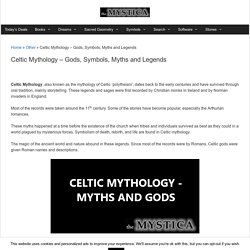
These legends and sages were first recorded by Christian monks in Ireland and by Norman invaders in England. Most of the records were taken around the 11th century. Some of the stories have become popular, especially the Arthurian romances. These myths happened at a time before the existence of the church when tribes and individuals survived as best as they could in a world plagued by mysterious forces. Who Were Celts - HISTORY. The Celts were a collection of tribes with origins in central Europe that shared a similar language, religious beliefs, traditions and culture.
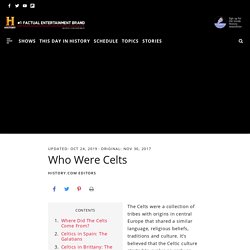
It’s believed that the Celtic culture started to evolve as early as 1200 B.C. The Celts spread throughout western Europe—including Britain, Ireland, France and Spain—via migration. Their legacy remains most prominent in Ireland and Great Britain, where traces of their language and culture are still prominent today. The existence of the Celts was first documented in the seventh or eighth century B.C. The Roman Empire, which ruled much of southern Europe at that time, referred to the Celts as “Galli,” meaning barbarians. The Religion of the Celts. The Celts were polytheistic and their druids held the key to the tribes’ historical, political, philosophical and moral culture.
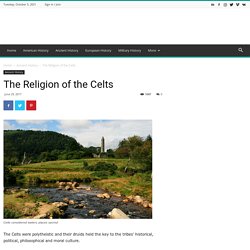
The Celts were not a religious people in the way that we would understand religion and religious conformity today. They were a polytheistic people like the Romans and the Greeks but unlike them, the Celts did not have an established pantheon of gods and goddesses. Their gods and goddesses tended to be deities with a local identity and thousands of them may have existed; only a few gods and goddesses were ‘national’. West European Climate: Location and Precipitation. In this article you will learn about:- 1.
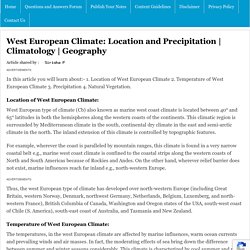
Location of West European Climate 2. Temperature of West European Climate 3. Precipitation 4. Natural Vegetation. Celtic geographic region - Bing. The Legend of the Fifth Sun. The Aztec creation myth which describes how the world originated is called the Legend of the Fifth Sun.
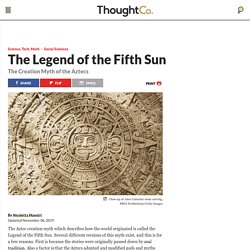
Several different versions of this myth exist, and this is for a few reasons. First is because the stories were originally passed down by oral tradition. Also a factor is that the Aztecs adopted and modified gods and myths from other groups that they met and conquered. According to the Aztec creation myth, the world of the Aztecs at the time of the Spanish colonization was the fifth era of a cycle of creation and destruction—they believed their world had been created and destroyed four times before.
Aztec Gods – Mythopedia. Aztecs: Empire, Culture & Facts - HISTORY. The Aztecs, who probably originated as a nomadic tribe in northern Mexico, arrived in Mesoamerica around the beginning of the 13th century. From their magnificent capital city, Tenochtitlan, the Aztecs emerged as the dominant force in central Mexico, developing an intricate social, political, religious and commercial organization that brought many of the region’s city-states under their control by the 15th century.
Invaders led by the Spanish conquistador Hernán Cortés overthrew the Aztec Empire by force and captured Tenochtitlan in 1521, bringing an end to Mesoamerica’s last great native civilization. Early Aztec History The exact origins of the Aztec people are uncertain, but they are believed to have begun as a northern tribe of hunter-gatherers whose name came from their homeland Aztlan, or “White Land” in the Aztec language of Nahuatl. The Aztecs appeared in Mesoamerica–as the south-central region of pre-Columbian Mexico is known–in the early 13th century.
What was the form of government of the Aztecs? The form of Government of the Aztecs was a theocracy, that is to say, a political system in which the maximum leader exercises the power like a divine mandate. The Aztecs organized themselves politically in order to ensure the stability and permanence in the power of the emperor and to guarantee the subjection of the conquered peoples. Representation of the Huey Tlatoani The triple alliance of the cities Tenochtitlán, Texcoco and Tlacopan was the initial design of the Aztec Empire, nevertheless, Tenochtitlán with the time became the dominant partner of the alliance. After the battles fought and the peoples conquered by the triple alliance, its power was established of preeminent and indirect way. They kept the rulers of these towns exercising their functions with the condition of payment of taxes to the empire and of providing military support when required by the emperor.
Unearthing the secrets of the Aztecs. Prominent Mexican archaeologist Eduardo Matos Moctezuma on April 10 will deliver the first lecture on campus in the series that bears his name and honors his contributions to archaeology. The title is “Eduardo Matos Moctezuma Discovers Himself: Excavations of the Great Aztec Temple,” and the public talk will take place at 6 p.m. at the Geological Lecture Hall, 24 Oxford St. Matos Moctezuma directed the excavation of the main Aztec site known as Templo Mayor in the late ’70s.
Nahuatl - The Lingua Franca of the Aztec Empire. Náhuatl (pronounced NAH-wah-tuhl) was the language spoken by the people of the Aztec Empire, known as the Aztec or Mexica. Although the spoken and written form of the language has substantively changed from the prehispanic classical form, Nahuatl has persevered for half a millennium. It is still spoken today by approximately 1.5 million people, or 1.7% of the total population of Mexico, many of whom call their language Mexicano (Meh-shee-KAH-noh). Key Takeaways: Nahuatl Nahuatl is the spoken language of the Aztec empire, as well as by their modern descendants. What’s the weather like in Mexico City, Mexico. The climate of Mexico City (Mexico) Mexico City is the capital of Mexico and one of the largest cities in the world with a population of more than 20 million.
The city is situated at an altitude of more than 2,000 meters in the Valley of Mexico and is surrounded by volcanoes and mountains. Because of its situation warm air remains stationary. This causes high temperatures; especially during the winter it is much warmer in the city than in its direct surroundings. What was the Geographical Location of the Aztecs?